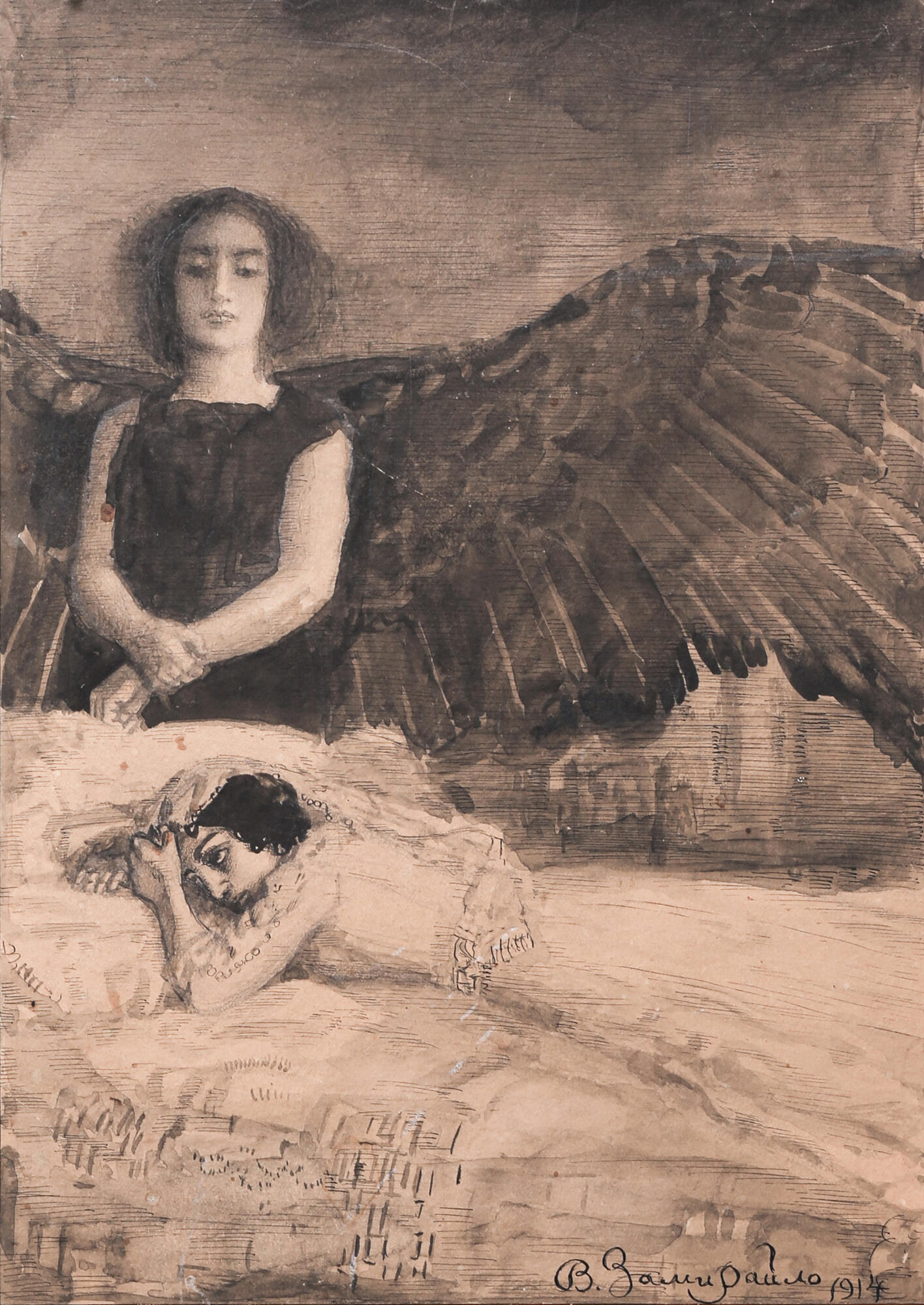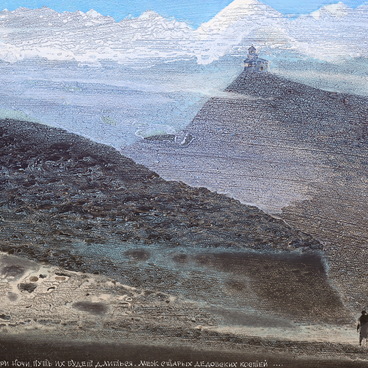Viktor Dmitriyevich Zamiraylo was a stage designer, theater artist, book cover designer, and illustrator. He was engaged in the genres of monumental and decorative graphics, as well as easel painting and applied graphics.
He was born on November 11, 1868, in Cherkasy, Kyiv Governorate. He began to draw at the early age of four. His family was favorably disposed towards this: the artist’s father used to be a church painter in his youth. In 1882, Viktor Zamiraylo entered the school of Nikolay Murashko, which was the only art institution in the whole region.
Zamiraylo’s artistic style was greatly influenced by two of his favorite painters — Mikhail Vrubel and Gustave Doré. He even studied and copied Vrubel’s works to try to reveal the secrets of his art. The two first met in 1884.
In Kyiv, St. Cyril’s Church was being restored, and Vrubel was involved in the process. The school students, including Zamiraylo, also took part in the restoration. The latter would later work on St. Volodymyr’s Cathedral, making schematic drawings of marble and bronze parts and creating ornamental patterns based on Viktor Vasnetsov’s sketches. Mikhail Vrubel was also invited to paint the cathedral.
In 1922, the historian of arts Vsevolod Voinov commented on the work of Viktor Zamiraylo, “He has the most incredible surreal visions in his head and treats them as a sharp reality, capturing them as they are in his numerous drawings… everything illusory becomes truly convincing.”
For this watercolor drawing, the artist chose a composition with two figures and a monastic cell as the setting. Tamara, wearing a light dress and a transparent kerchief on her dark hair, lies face down on a wide bed. She is placed in the foreground close to the bottom of the page.
Near Tamara, the Demon with outstretched wings stands at the head of the bed. His eyes are downcast, his arms are folded in front of him. The Demon’s demeanor radiates reserve, arrogance, and imperiousness. Sergey Ernst believed that Zamiraylo’s sepia drawings were “second only to Vrubel’s illustrations for Lermontov’s poetry.”
He was born on November 11, 1868, in Cherkasy, Kyiv Governorate. He began to draw at the early age of four. His family was favorably disposed towards this: the artist’s father used to be a church painter in his youth. In 1882, Viktor Zamiraylo entered the school of Nikolay Murashko, which was the only art institution in the whole region.
Zamiraylo’s artistic style was greatly influenced by two of his favorite painters — Mikhail Vrubel and Gustave Doré. He even studied and copied Vrubel’s works to try to reveal the secrets of his art. The two first met in 1884.
In Kyiv, St. Cyril’s Church was being restored, and Vrubel was involved in the process. The school students, including Zamiraylo, also took part in the restoration. The latter would later work on St. Volodymyr’s Cathedral, making schematic drawings of marble and bronze parts and creating ornamental patterns based on Viktor Vasnetsov’s sketches. Mikhail Vrubel was also invited to paint the cathedral.
In 1922, the historian of arts Vsevolod Voinov commented on the work of Viktor Zamiraylo, “He has the most incredible surreal visions in his head and treats them as a sharp reality, capturing them as they are in his numerous drawings… everything illusory becomes truly convincing.”
For this watercolor drawing, the artist chose a composition with two figures and a monastic cell as the setting. Tamara, wearing a light dress and a transparent kerchief on her dark hair, lies face down on a wide bed. She is placed in the foreground close to the bottom of the page.
Near Tamara, the Demon with outstretched wings stands at the head of the bed. His eyes are downcast, his arms are folded in front of him. The Demon’s demeanor radiates reserve, arrogance, and imperiousness. Sergey Ernst believed that Zamiraylo’s sepia drawings were “second only to Vrubel’s illustrations for Lermontov’s poetry.”



